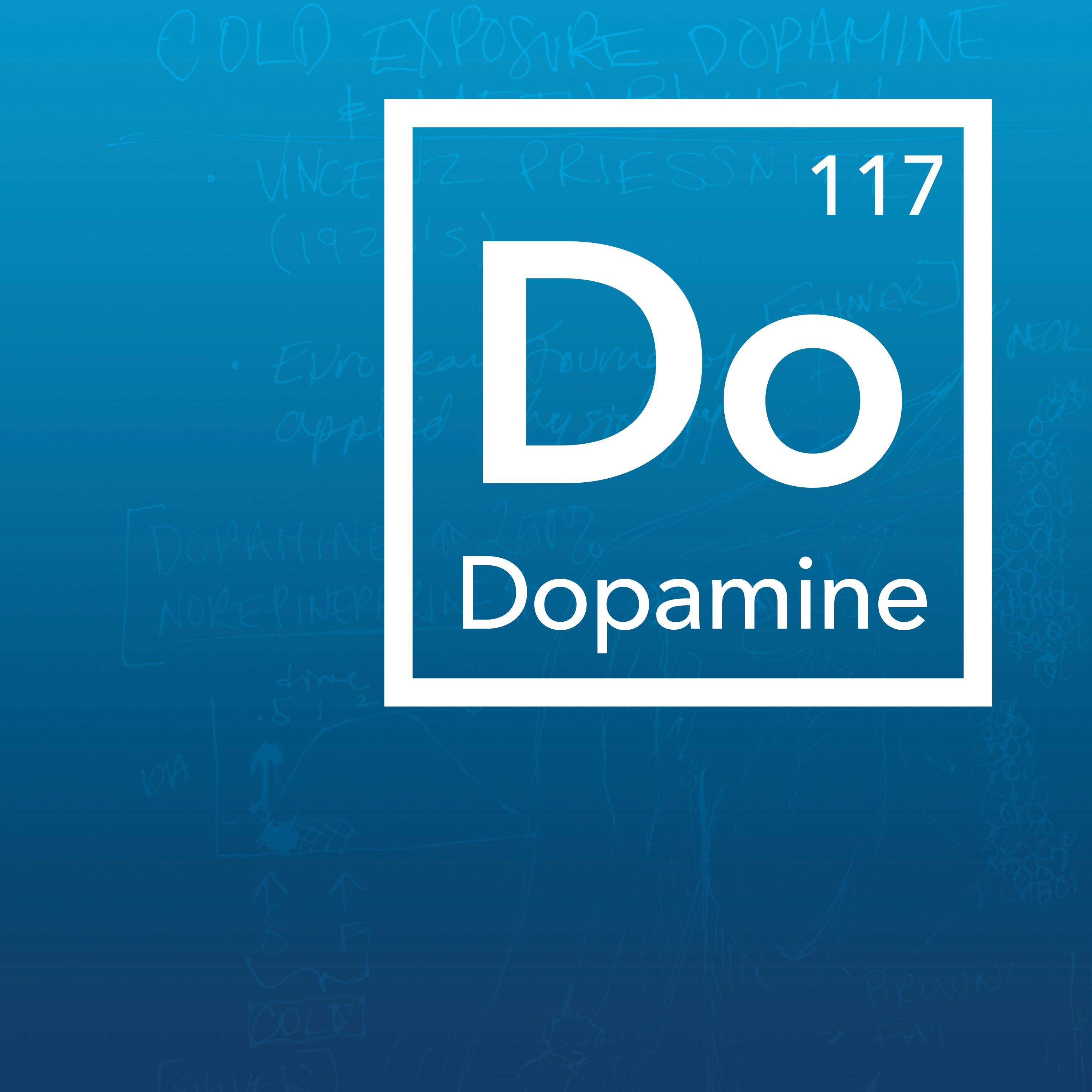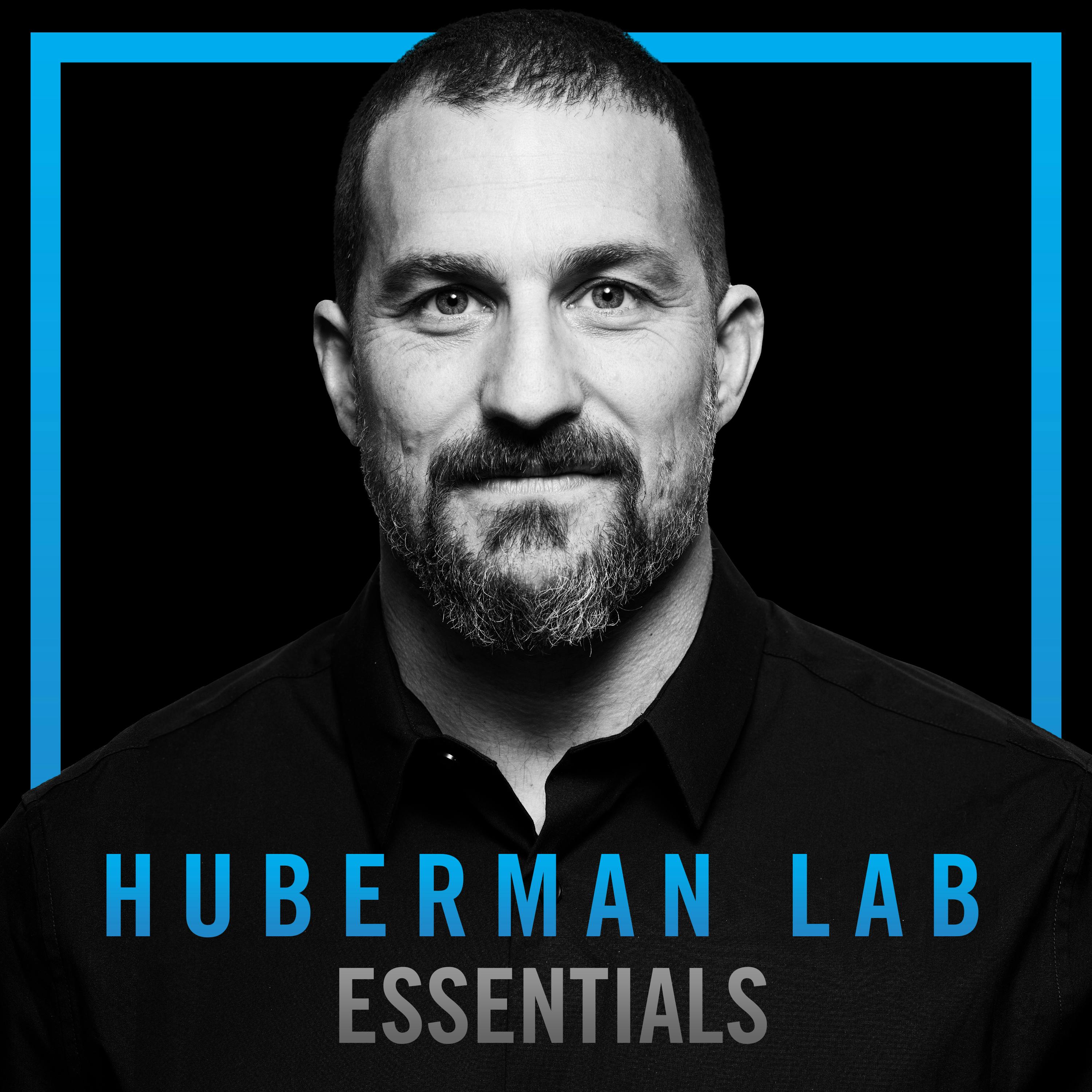
March 27, 2023 • 1hr 54min
Leverage Dopamine to Overcome Procrastination & Optimize Effort
Huberman Lab

Key Takeaways
- Dopamine is a neuromodulator that plays a crucial role in motivation, reward, and goal-directed behavior
- There are five main dopamine circuits in the brain, with the mesocortical pathway being most relevant for motivation and goal pursuit
- Dopamine dynamics involve peaks, troughs, and baseline levels. Understanding these dynamics is key to leveraging dopamine for motivation
- Peaks in dopamine are followed by troughs below baseline, which trigger craving and motivation to pursue rewards
- Maintaining a healthy baseline dopamine level is crucial for ongoing motivation. This can be achieved through sleep, nutrition, exercise, sunlight exposure, and other lifestyle factors
- Deliberate cold exposure has been shown to increase baseline dopamine levels for several hours
- Be cautious about stacking too many dopamine-boosting behaviors or substances, as this can lead to diminishing returns and motivation issues
- To overcome procrastination, engage in effortful "painful" activities to steepen the dopamine trough and rebound more quickly to a motivated state
- The ultimate goal is to make effort itself rewarding, allowing for sustained motivation and goal pursuit
Introduction
In this episode, Dr. Andrew Huberman provides an in-depth exploration of dopamine - the neurotransmitter responsible for motivation, reward, and goal-directed behavior. He explains the neurobiology of dopamine circuits in the brain and how understanding dopamine dynamics can allow us to leverage this system to overcome procrastination, maintain motivation, and achieve our goals.
Huberman emphasizes that while dopamine is often associated with pleasure, it is equally important for driving motivation and effort. By understanding how dopamine peaks, troughs, and baseline levels interact, we can develop strategies to optimize our dopamine system for sustained motivation and performance.
Topics Discussed
Dopamine Circuits in the Brain (6:27)
Huberman outlines the five main dopamine circuits in the brain:
- Nigrostriatal pathway - Involved in movement initiation and suppression
- Mesolimbic pathway - Projects to areas like the hypothalamus, involved in basic survival functions
- Mesocortical pathway - Projects to the prefrontal cortex, crucial for motivation and goal-directed behavior
- Tuberoinfundibular pathway - Connects the brain to the pituitary gland, impacting hormone release
- Retinal dopamine circuit - Helps adapt vision to different light conditions
The episode focuses primarily on the mesocortical pathway due to its importance in motivation and goal pursuit.
Dopamine Dynamics: Peaks, Troughs, and Baselines (17:13)
Huberman introduces the concept of dopamine dynamics using a "wave pool" analogy:
- Peaks - Spikes in dopamine release triggered by rewards or anticipation of rewards
- Troughs - Drops in dopamine below baseline following peaks
- Baseline - The steady-state level of dopamine in the system
He explains that "Desire for things increases dopamine, but then our level of dopamine drops below baseline. And it's that drop below baseline that triggers the motivation to bring that dopamine level back up by going and pursuing the thing that you wanted in the first place."
Craving, Motivation, and Reward Prediction Error (20:28)
Huberman discusses how dopamine dynamics drive craving and motivation:
- Anticipation of rewards causes an initial dopamine peak
- This is followed by a trough below baseline, triggering motivation to pursue the reward
- Reward prediction error compares the actual reward to what was expected, influencing future motivation
He emphasizes that "Your craving for things is not just about craving for those things per se. It's also a desire to relieve the pain of not having those things."
Addiction and Dopamine (37:40)
Huberman explains how addiction hijacks the dopamine system:
- Addictive substances/behaviors cause very large, rapid dopamine peaks
- This leads to deeper troughs and a progressive narrowing of pleasurable activities
- Over time, higher doses are needed to achieve the same effect
He notes that "The higher the peak in dopamine and the faster the rise to that peak, the further below baseline the dopamine drops after the drug wears off."
Tools to Maintain Baseline Dopamine Levels (53:25)
Huberman outlines several strategies to maintain healthy baseline dopamine levels:
- Quality sleep - Restores dopamine reserves
- Non-sleep deep rest (NSDR) - Can increase dopamine by up to 65%
- Proper nutrition - Especially foods high in tyrosine
- Morning sunlight exposure - Increases dopamine and sets circadian rhythms
- Regular exercise - Both cardiovascular and resistance training
Deliberate Cold Exposure and Dopamine (1:03:26)
Huberman discusses research showing that cold exposure can significantly increase baseline dopamine levels:
- Cold water immersion (up to neck) for 1-2 minutes can increase dopamine for 2-5 hours
- Recommends doing this in the morning
- Cautions against doing it immediately after strength training
Supplements and Prescriptions for Dopamine (1:09:38)
Huberman reviews some supplements and medications that can impact dopamine levels:
- L-Tyrosine - Precursor to dopamine, can improve cognitive performance
- Mucuna Pruriens - Contains L-DOPA, but may cause peaks and crashes
- Prescription medications like Ritalin, Adderall, and Modafinil
He emphasizes starting with low doses and being cautious about combining dopamine-boosting substances.
Dopamine Stacking and Intrinsic Motivation (1:23:31)
Huberman warns against excessive "dopamine stacking" - combining too many dopamine-boosting behaviors or substances:
- Can lead to diminishing returns and motivation issues
- Recommends being selective about when to use dopamine boosters
- Emphasizes the importance of preserving intrinsic motivation
He states, "There is no replacement for intrinsic motivation. Intrinsic motivation is perhaps the holy grail of all human endeavors and behaviors."
Making Effort the Reward and Growth Mindset (1:38:10)
Huberman discusses the concept of making effort itself rewarding:
- Relates to Carol Dweck's research on "growth mindset"
- Involves adopting the perspective that you can improve with effort
- Can lead to sustained motivation and goal achievement
Tool: Overcoming Procrastination (1:41:49)
Huberman provides a powerful strategy for overcoming procrastination:
- When feeling unmotivated, engage in a brief, effortful "painful" activity
- This steepens the dopamine trough, leading to a faster rebound to baseline
- Examples: cold shower, intense exercise, challenging meditation
He explains, "You need to put your body and mind into a state of discomfort quickly... By doing that, you steepen the trough, you steepen the slope of the trough, which we know brings you back to your baseline level of dopamine more quickly."
Conclusion
Dr. Huberman concludes by emphasizing the power of understanding dopamine dynamics for optimizing motivation and goal pursuit. By maintaining healthy baseline dopamine levels, being mindful of dopamine peaks and troughs, and learning to make effort itself rewarding, we can develop sustained motivation and overcome procrastination. The key is to leverage our understanding of the dopamine system to create an environment and mindset conducive to long-term goal achievement and personal growth.







